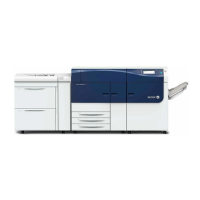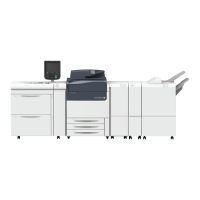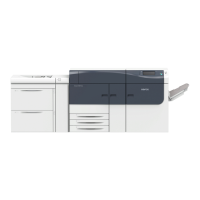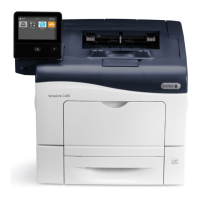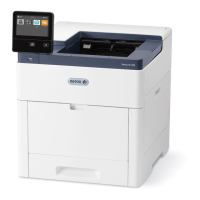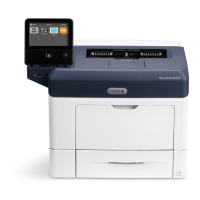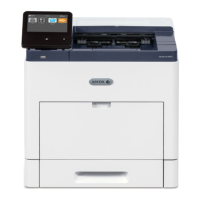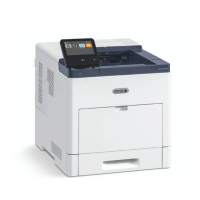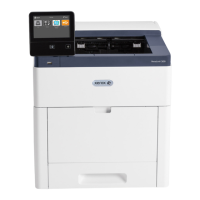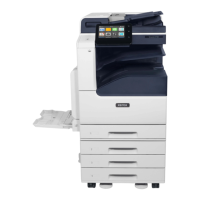34 Customer Expectations & Installations Guide
Maintenance and Support
Customer / Operator Maintenance
Automated Color Quality Suite (ACQS) (Optional Performance Package)
The optional Performance Package for the Versant® 80 includes an Inline Spectrophotometer (ILS) and the Automated Color
Quality Suite (ACQS). The ACQS suite is available on the Xerox EX Print Server Powered by Fiery. These tools can be used to
perform automated DFE calibration and custom profiling. These procedures are automated in that they eliminate the need for
an operator to manually scan target sheets using an external spectrophotometer. The operator must initiate the procedures at
the print server. All target sheets are then generated and scanned automatically, and all measurements, calculations, and
corrections are performed automatically. Following normal calibration or profiling, the ILS does not monitor or measure prints
within an actual print job.
In order to ensure the best color quality, customers should always calibrate and then create a custom profile for each stock to
ensure the best color quality.
An external (handheld) spectrophotometer can still be used for manual print server calibration and profiling, if preferred.
However, customers should always use a single device type for calibration and profiling measurements, i.e. do not calibrate with
an external spectrophotometer and then profile using the ILS. The billing meter(s) will be incremented for pages generated by
the ACQS procedures. This is not a change from the manual procedures.
Automated Color Calibration Notes and Caveats
All digital color presses require periodic image quality assessment and maintenance to deliver consistent color over time.
Standard color maintenance procedures should include periodic Calibration to set gray balance, which returns the print
engine to a nominal state.
Automated Print Server Calibration must be initiated by an operator at the print server.
Automated Calibration is accomplished in two to three minutes per halftone (line screen) using the ILS.
Calibration frequency depends in part on customer preference; however, the following guidelines apply:
o We recommend that Calibration be performed daily.
o Calibration should always be performed after service procedures or if any drift in color is detected.
o During a regular 8-hour shift, many customers calibrate at least once for each halftone that is used during that shift and
many customers calibrate more frequently to mitigate potential drift.
o Calibration should be performed using your most commonly used paper stock, or a “centerline” stock with mid-range
weight and coating within the set of stocks you typically use.
Each time Automated Calibration is activated, the target sheets are printed, scanned and ejected to the purge tray location
(for example, the top tray of a High Capacity Stacker). If the purge tray is full, performing Automated Calibration will cause a
jam to occur. In most cases, once the jam is cleared, the printer will be able to resume calibration. If the Automated
Calibration procedure cannot recover, the current calibration job will be aborted, and the operator will need to close the
calibration dialog box and reinitiate calibration.
Advanced Profiling Notes and Caveats
Advanced Profiling creates a superior, custom ICC-compliant Destination Profile for color critical applications that require a
high degree of color accuracy. Using the ILS, this procedure will automatically print target sheets (measure the color patches
on those sheets, and use those color measurements to generate a custom color profile for that specific press using that stock
with that halftone dot). For optimal color accuracy, customers should create a custom profile for each stock that is used.
Advanced Profiling must be initiated by the operator at the FreeFlow print server.
When creating new advanced profiles, customers should perform DFE calibration first, and then create profile.
Once the target sheets are printed and scanned, the Advanced Profiling software takes approximately 12 minutes to
generate a profile for the selected halftone.
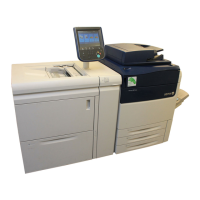
